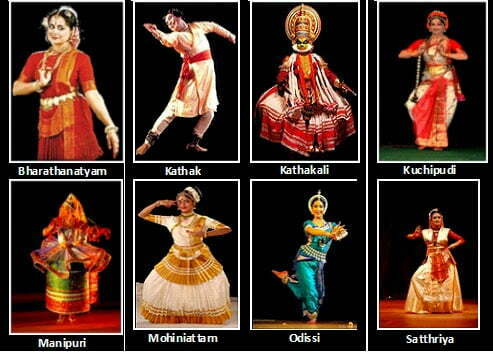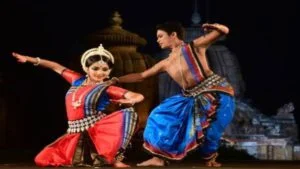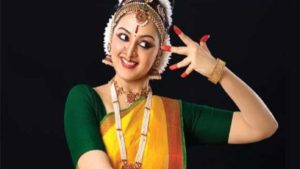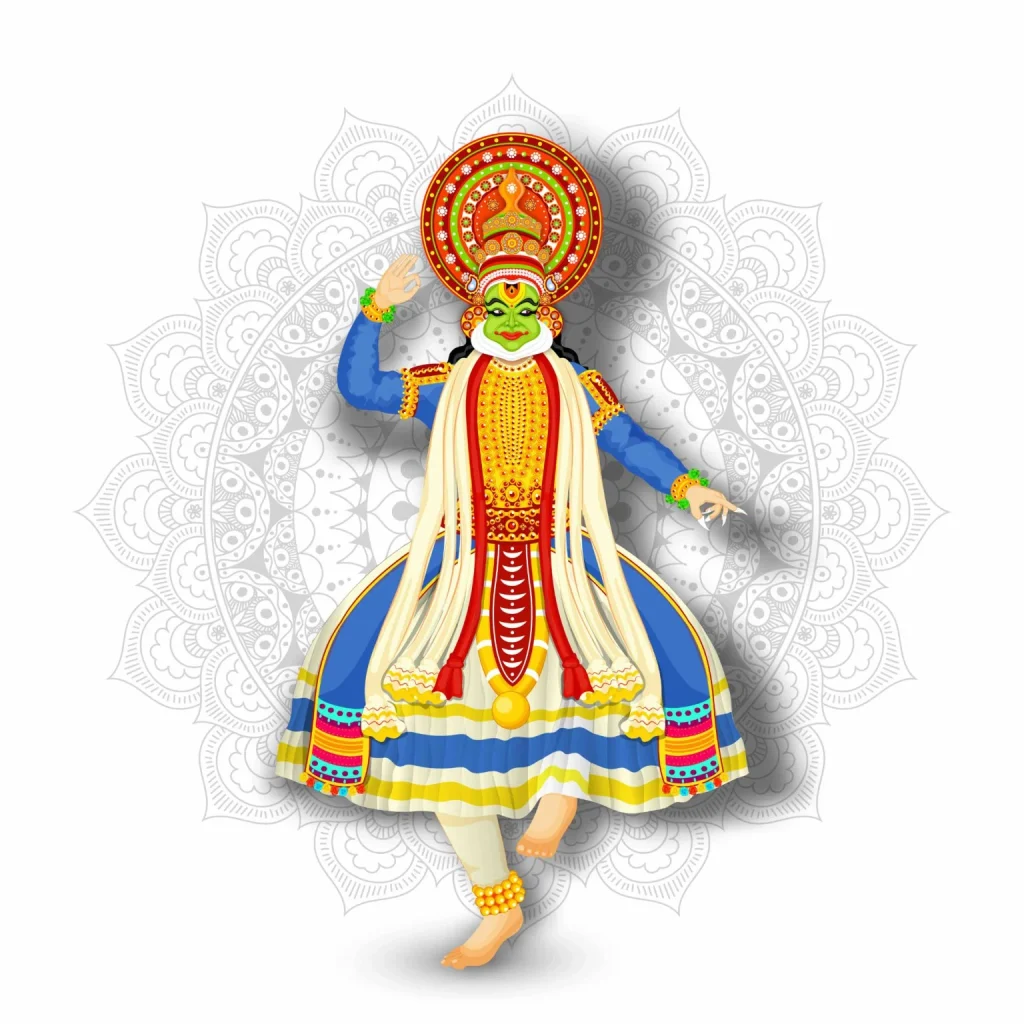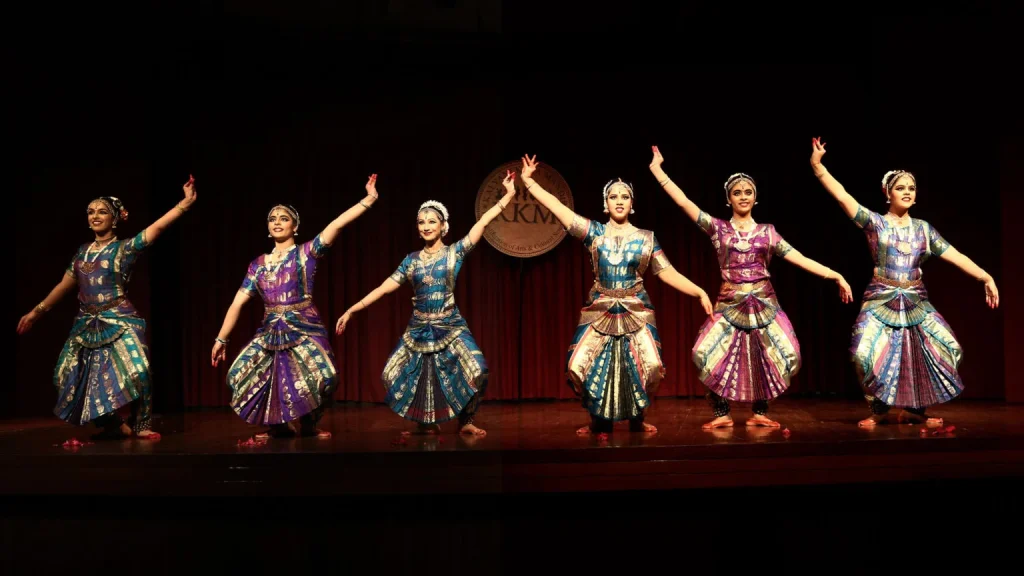Bharatanatyam, Kathak, Kuchipudi, Odissi, Kathakali, Sattriya, Manipuri, and Mohiniyattam are the eight styles of classical dance recognized by the Sangeet Natak Academy.
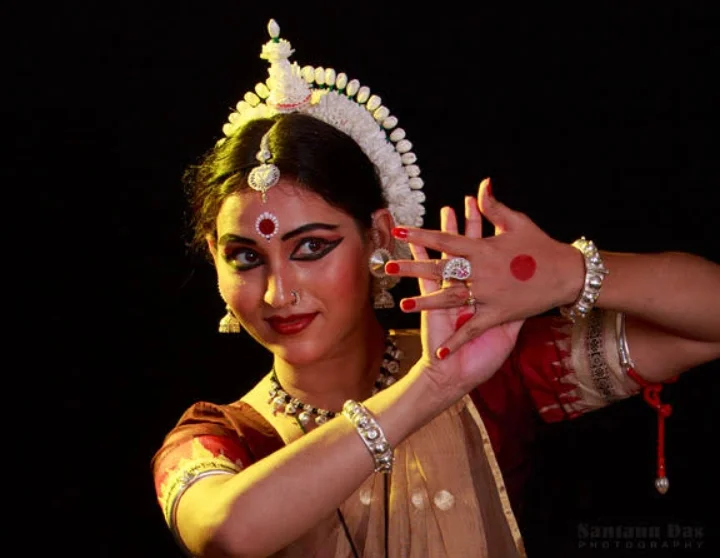
These dances have a long history in their respective regions. Artists compose in them Telugu, Tamil, Sanskrit, Kannada, Hindi, or any other Indian language. Therefore, they represent a unity of basic themes expressed in a variety of styles, costumes, and expressions.
In India, there are currently eight classical dances. Indian classical dance is a catch-all name for a variety of musical theater performance arts. Its philosophy and practice may trace back to the Sanskrit scripture Natyashastra.
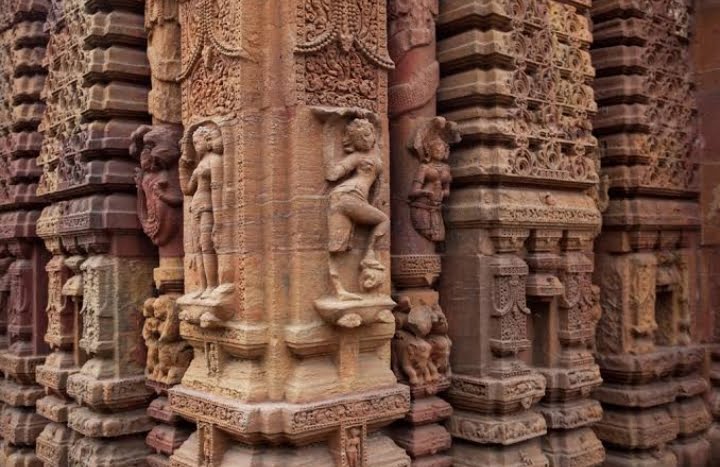
Origin of Indian Classical Dance
The first complete compilation on Indian classical dance was between 200 BCE and 200 CE, while estimations range from 500 BCE to 500 CE. The most widely studied form of the Natyashastra text comprises around 6000 verses divided into 36 chapters.
According to Natalia Lidova, the work explains the philosophy of Tava dance (Shiva), raBaavangal, bhava, expression, gestures, acting techniques, basic steps. Mostly, they are in standing postures, all of which are part of Indian traditional dances.
As per this ancient text, dance and performing arts are a method of representation of spiritual ideas, virtues. Moreover, the essence of texts. Dance is among India’s most popular performing arts. It has a long and distinguished history that dates back to our country’s early beginnings. It is now a great tool for conserving and reiterating our cultural history.
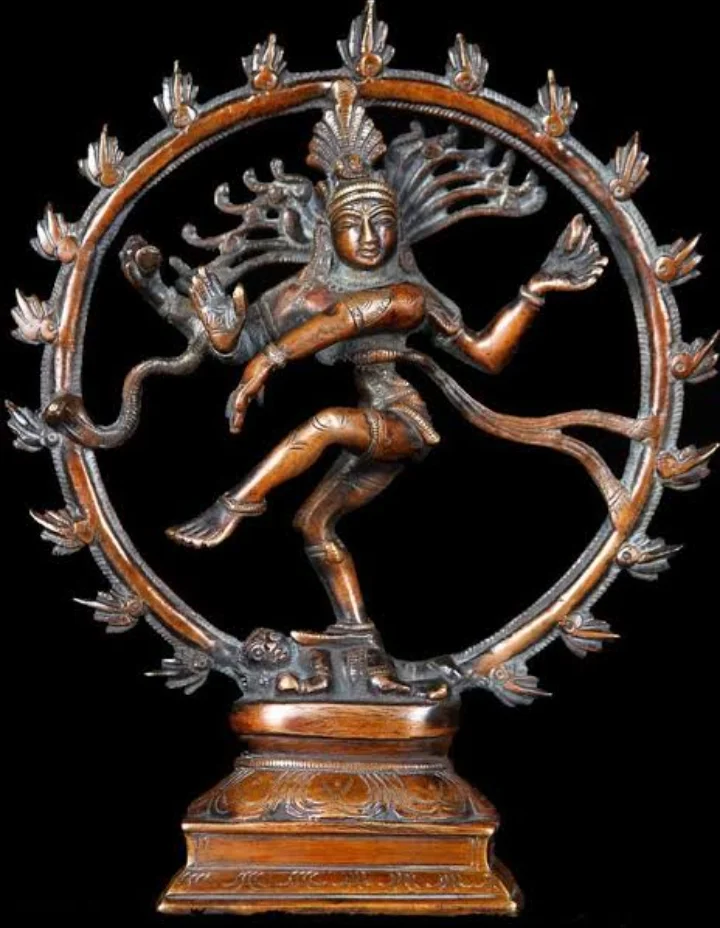
Various forms of worship flourished throughout Vedic times. In order to appease the natural elements. The devotion of Diga Palas (guarding deities of the eight directions), the Trinity viz. Brahma, Vishnu, and Mahesvara, and Indra, induced men to express their thoughts in an aesthetic fashion.
Below are the origin of Indian classical dances and how they flourished-
Bharatnatyam
To begin with, Devadasi Attam originated from Thevar Adichi. Attam, refers to the dance of the Devas or Lords’ dasis. The Devadasi Attam grew as Sadir or Nautch during the Mahratta period.
The Tanjore Quartet, consisted of the four brothers Ponnayya, Chinnayya, Vadivelu, and Sivanandam. Gradually, they got appointed as Vidwans during Serfoji’s reign. They developed this primitive dance form, giving it its current form and shape. Further, they renamed it Bharatnatyam.
History regards Sadir or Nautch as the foundation of modern Bharatanatyam. It evolved from the 17th to the 19th century. Sadir is a Marathi word that means “to press.” King Thulaja claimed that Sadir evolved during his reign in Sangeet Saramritha. But, even before that, Sanskrit treatises included specific chapters on dance. Likewise, prominent intellectuals wrote works on Natya.
Bharatnatyam is the modern-day successor to the old Tamil dance form known as Koothu. Tap here to watch a performance.
Kathak
Kathak was considered as aristocratic amusement by Mughal courts and nobility. They were willing to deliver it to low-income families in Uttar Pradesh.
For instance, Bhavai is a simplified regional variation of Kathak.
Kathak developed independently at the courts of north Indian kingdoms and during the Bhakti movement. Particularly by adding the Hindu god Krishna’s childhood and legends. The dancers on the 2nd century BC panels excavated in Bharhut are shown in a vertical posture with their arms in positions that are similar to Kathak‘s moves today.
In a “pataka hasta,” the majority of the dancers have one arm near the ear (Mudra). The hasta decreased to the bust level in succeeding years.
Kathakali
The King of Kottarakara, in south Kerala, was fascinated by the Krishnattam performers’ abilities in the 17th century. Hence, he asked the Krishnanattam Troupe to perform in south Kerala. Although, when the King of Calicut declined, the King of Kotarraka composed eight new stories based on Lord Rama’s life. Consequently, he dubbed the art form Ramanattam.
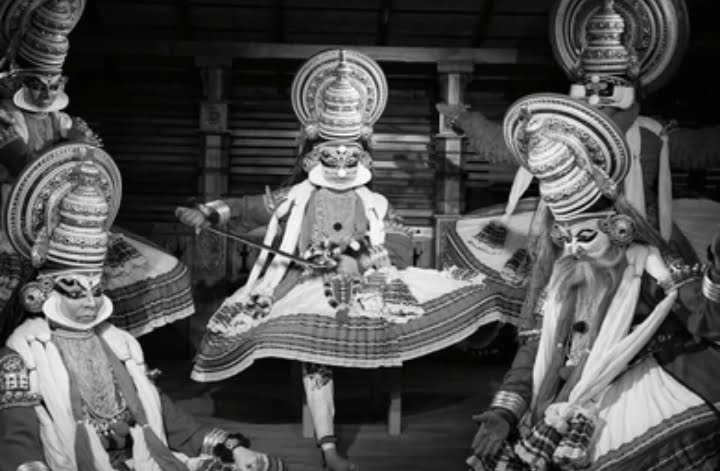
As writers and poets began to produce stories based on other sacred texts, such as the Mahabharatha, Ramanattam became obsolete. Kathakali took birth when the new stories were renamed to be KATHA(story) KALI ( play).
Folk tales, religious traditions, and spiritual notions from Hindu epics and Puranas are among the traditional topics of Kathakali.
Kuchipudi
Kuchipudi is a pre-eminent Indian classical dance style. It is one of India’s top ten classical dance forms. Is a dance-drama performance art that started in a village in Andhra Pradesh’s Krishna district.
In the 17th century, Tirtha Narayanayati was a Carnatic music composer and Advaita Vedanta sannyasin the earliest existing sub-school of Vedanta. His orphan disciple was Sidhyendra Yogi, a Telugu Brahmin. They helped in beginning, methodizing, and arranging the current style of Kuchipudi.
Odissi Dance
Young boys costumed in female clothes, known as Gotipuas performed the dance in public. This marked the beginning of what Odissi that we witness today. Female Devadasis performed dances in front of Lord Jagannath in Puri temple, Odisha. Those were the mixed excerpts of Odissi.
Although, royal support began to dwindle from the 17th century. The dancers fell out of favor due to a lack of funding and status.

Only in the 1950s did academicians and revivalist Gurus start on a vast project to recreate Odissi. Guru Pankaj Charan Das, the Guru of all Gurus, conducted significant research with Guru Kelucharan Mohapatra, Guru Deb Prasad Das, and Guru Mayadhar Raut.
In order to recreate this dance style, they examined the Gotipuas and Maharis dance traditions, as well as Orissa temple sculptures and ancient dissertations.
Sattriya
One feature of the Sattriya dance performed within temples and monasteries is its performance in front of a copy of the Bhagavata Purana in the dance hall. It is located in the eastern sunrise corner called Namghar.
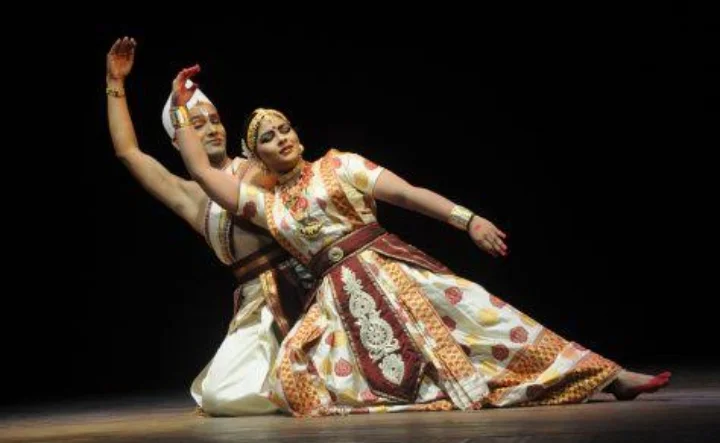
Sattriya art has flourished in Hindu monasteries in Assam. Sattra was popular from the 15th century, as part of the Vaishnava Bhakti movement. Sankaradeva systematized the dance using ancient literature. Further, he included drama and expressive dancing (nritta and nritya). It was devoted to Krishna as an act of emotional sentiment.
Manipuri
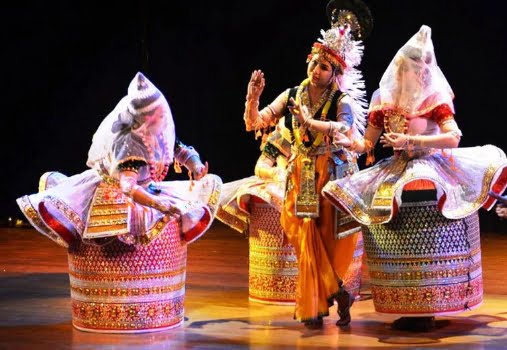
Maharaja Bhagyachandra of Manipur State in the late 1700s CE adopted Gaudiya Vaishnavism (Krishna-oriented). He chronicled and standardized the Manipuri dance form. Further, he ushered it in a golden era of its development and perfection.
Later, through the efforts of Noble Laureate Rabindranath Tagore, the historic Manipuri Raas Leela dance genre was given a second lease. He was impressed by Goshtha Lila’s dance in Sylhet in 1919. Hence, he invited Guru Buddhi Mantra Singh, a Manipuri Raas Leela dancer, to join the faculty of Shantiniketan.
Mohiniattam
During the time of the Chera monarchs from 9 to 12 C.E Devadasis used to perform Mohiniyattam in temples. This dance form incorporates elements of other Kerala performing arts such as Koothu and Kuttiyattam. It traces back to the state of Tamil Nadu.
According to Hindu mythology, Mohiniyattam has a legend linked to it. The demons took the divine brew by force after the gods. Consequently, they and the devils churned the ocean of milk together to obtain the elixir of life. After the tragedy, Lord Vishnu came to the gods’ aid. Further, he enticed the demons by taking the appearance of Mohini, a stunning woman. In the end, he took the elixir of life from them, giving it to the gods.
Mohiniyattam is a dance genre that reflects Mohini’s alluring activities.

Final thoughts
After reading this article we hope we could encourage you to learn and understand these dance forms yourself. India’s heritage is unique and pious which reflects in the origin of its classical dances.
Please do consider enrolling in our classes if you found this article helpful. The grace of Indian dance forms is worth learning. Also do give a read to our other blog updates, here.
Share with your friends

